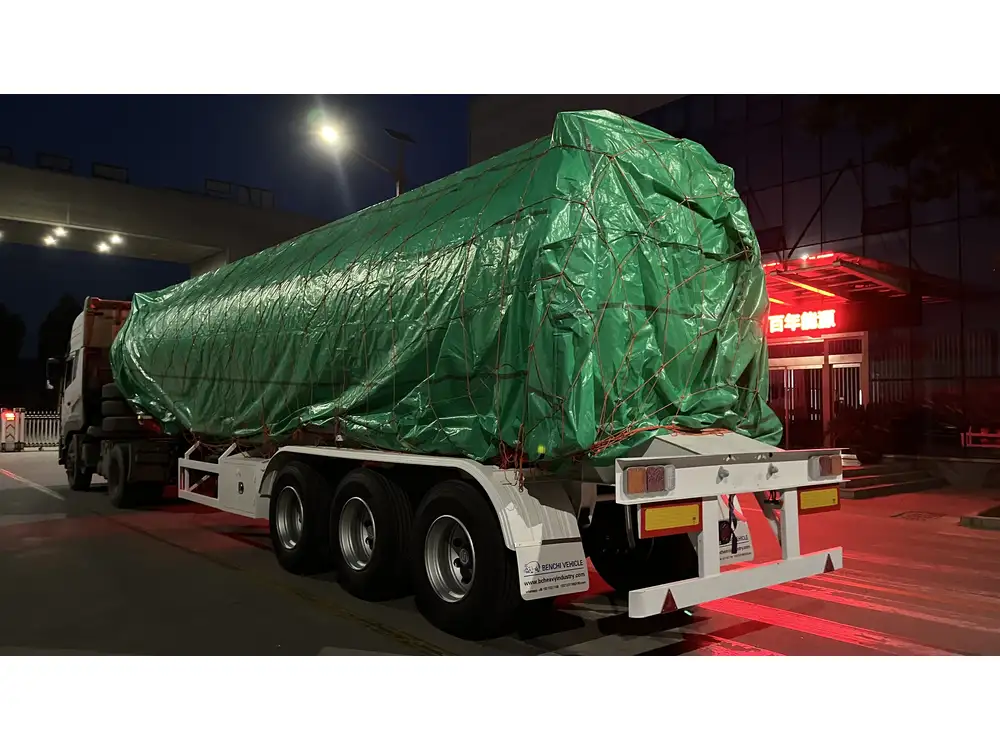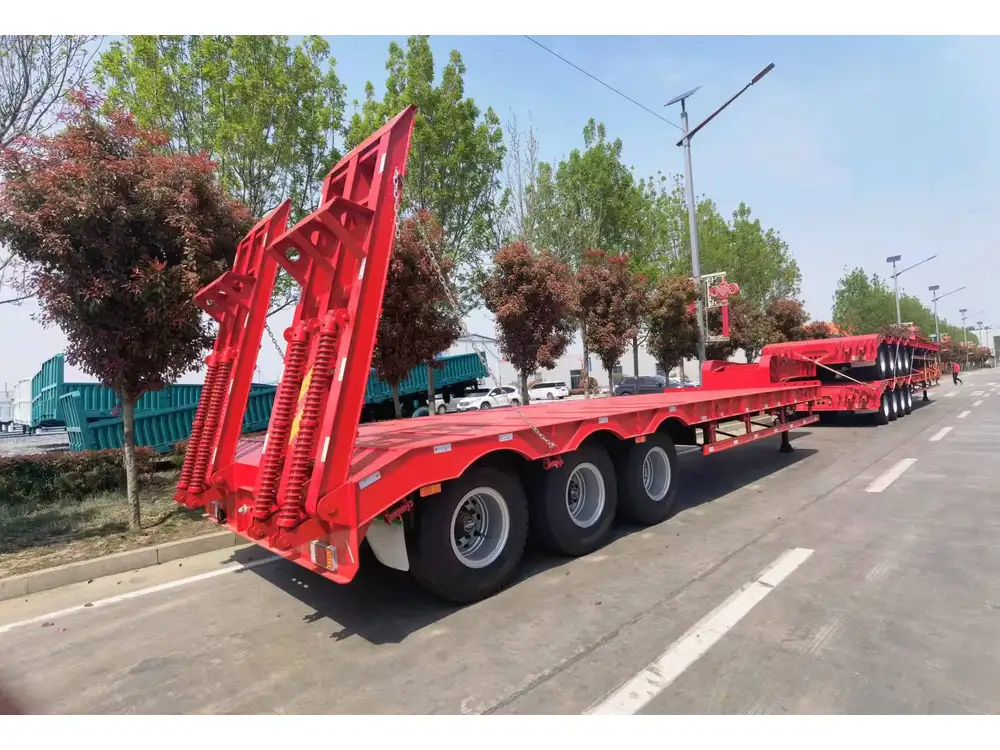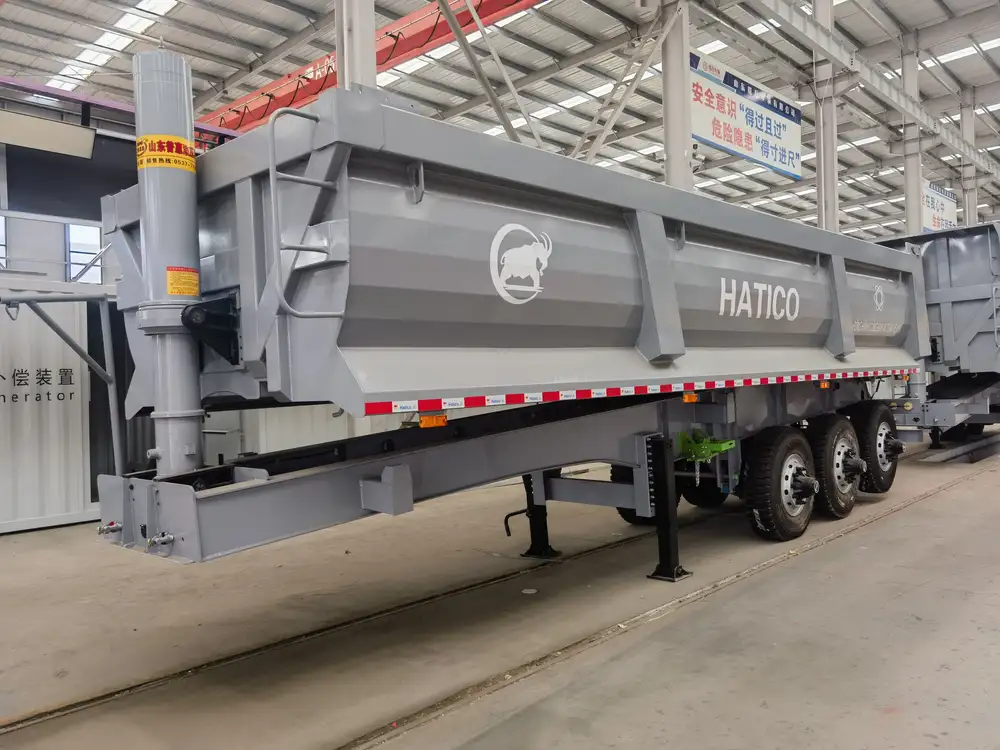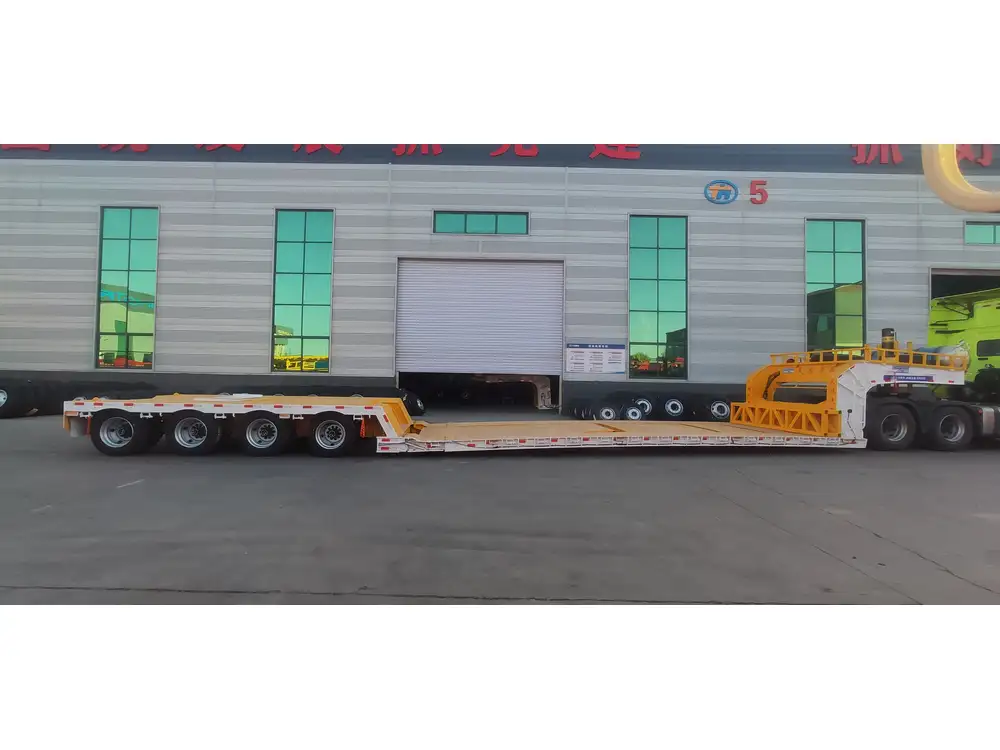When it comes to the logistics and transportation industry, the width of flatbed trailers is a pivotal aspect that affects cargo loading, state regulations, and overall transport efficiency. Whether you are a seasoned trucking professional or a novice looking to understand more about flatbed trailers, it is essential to comprehend their dimensions and how they fit into the larger picture of transport logistics.
Standard Flatbed Trailer Width
Flatbed trailers vary in width, but most adhere to standard measurements to facilitate compliance with transportation regulations and safe road travel. Typically, the width of a flatbed trailer is 8.5 feet (102 inches). This standard width accommodates a variety of freight types, ensuring that the trailer remains versatile across multiple hauling needs.
| Dimension | Metric Equivalent |
|---|---|
| Standard Width | 8.5 feet (102 inches) |
| Maximum Allowable Width | 8.5 feet (2.59 meters) |
Legal Considerations for Trailer Width
The legal limits on trailer width can vary significantly from one jurisdiction to another. In the United States, federal guidelines set a maximum width of 8.5 feet, but individual states may impose different regulations. For instance:
- California allows some configurations to exceed 8.5 feet if specific permits are obtained.
- Texas often allows wider trailers, especially for agriculture-related transport.
Understanding these variances is crucial for logistics firms and independent operators alike to avoid legal penalties and to ensure efficient routing.

Types of Flatbed Trailers and Their Widths
While a standard flatbed trailer is 8.5 feet wide, different types of flatbed trailers exist, each designed for specific purposes with varying dimensions. Here are the most common types you might encounter:
1. Standard Flatbed Trailers
These standard units are the most utilized in the industry, designed to carry a variety of flat cargos such as machinery, lumber, and construction materials. The standard width is 8.5 feet, and they can often reach lengths of 48 to 53 feet.
2. Step Deck Trailers
Step deck trailers, or drop-deck trailers, have a lower deck. The reduced height allows for the transport of taller cargo that cannot exceed federal height limits of 13.5 feet. The width remains the same at 8.5 feet, but the lowered height provides distinct advantages for specific freight types.

3. Lowboy Trailers
Lowboy trailers are designed explicitly for transporting heavy equipment and machinery. They usually have a two-deck structure, allowing for greater stability and height clearance for taller items. Their width, again, aligns with the standard 8.5 feet but often requires special permits depending on the load.
4. Multi-Axle Trailers
Multi-axle flatbeds are designed for heavy payloads. They accommodate larger loads while remaining within a width of 8.5 feet. This trailer type is fundamental for transporting oversized equipment that requires additional support due to weight distribution.
| Type of Trailer | Width (Feet) | Common Lengths (Feet) | Typical Use |
|---|---|---|---|
| Standard Flatbed | 8.5 | 48 – 53 | General freight |
| Step Deck | 8.5 | 48 – 53 | Taller loads |
| Lowboy | 8.5 | 48 – 53 | Heavy machinery |
| Multi-Axle | 8.5 | 48 – 53 | Massive construction equipment |
Factors Affecting Flatbed Trailer Width Requirements
Several factors influence the choice of trailer width beyond legal restrictions. These factors include cargo type, weight considerations, and additional safety regulations.

1. Cargo Type
The nature of the cargo significantly influences the choice of flatbed trailer dimensions. When transporting wide or bulky items, selecting a trailer width to accommodate the load while adhering to road legalities becomes imperative. For example, shipping containers or prefabricated structures may necessitate wider loads that might require special permits.
2. Weight Considerations
Weight distribution is another critical aspect to consider when assessing flatbed trailer widths. Overloading a trailer can lead to unsafe driving conditions, increased wear and tear, and legal repercussions. A trailer with a wider base may aid in more evenly distributing heavier loads, enhancing safety and compliance with weight regulations.
3. Safety and Stability
A wider trailer may provide improved stability for certain loads, especially when navigating winding roads or harsh weather conditions. Ensuring that the trailer remains stable during transport helps minimize the risk of accidents and damage to both the cargo and trailer.

Loading and Unloading Challenges
Understanding how width impacts the loading and unloading process is essential for maximizing operational efficiency. Here are key considerations:
1. Loading Dock Access
Access to loading docks can vary; some docks may not accommodate wider trailers. Ensuring that loading facilities can handle an 8.5-foot trailer is crucial for logistics planning, especially in urban areas where space is limited.
2. Forklift Accessibility
When employing forklifts for loading and unloading, the width of the flatbed needs to align with the forklift’s operational dimensions. Forklifts typically require ample space to maneuver safely, and thus, understanding your trailer’s width can aid in planning effective loading strategies.

Common Misconceptions about Flatbed Trailers
While flatbed trailers are essential in transportation logistics, some misconceptions can lead to confusion.
Misconception 1: All Flatbed Trailers Are the Same Width
As established, while the standard width is 8.5 feet, there are various types of flatbed trailers designed for specific applications. Adapting to the appropriate style of trailer based on cargo will enhance transport efficiency.
Misconception 2: Permits Are Not Required for Wide Loads
Many operators assume that a standard flatbed trailer is exempt from special regulations. However, when transporting oversized or specialized cargo that extends beyond standard dimensions, securing appropriate permits is critical.

Conclusion
In conclusion, the width of flatbed trailers plays a vital role in securing efficient transport operations. The standard width of 8.5 feet provides flexibility for a wide range of cargo types, although it is vital to consider legal dimensions and associated regulations specific to various jurisdictions.
Utilizing the knowledge of different trailer types, understanding loading and unloading requirements, and challenging common misconceptions empowers logistics professionals to make informed decisions regarding transport operations. Equipped with this information, businesses can navigate the complexities of the transport industry confidently, ensuring compliance while maximizing operational efficiency. Whether choosing a standard or specialized flatbed trailer, knowing how wide a flatbed trailer can significantly influence successful freight transport.



